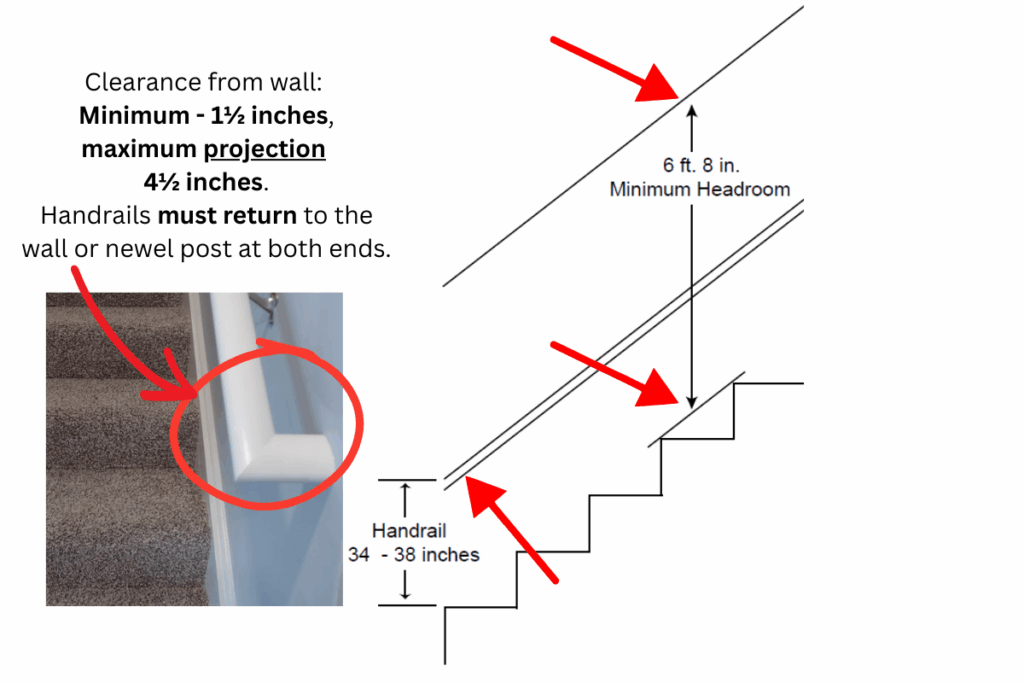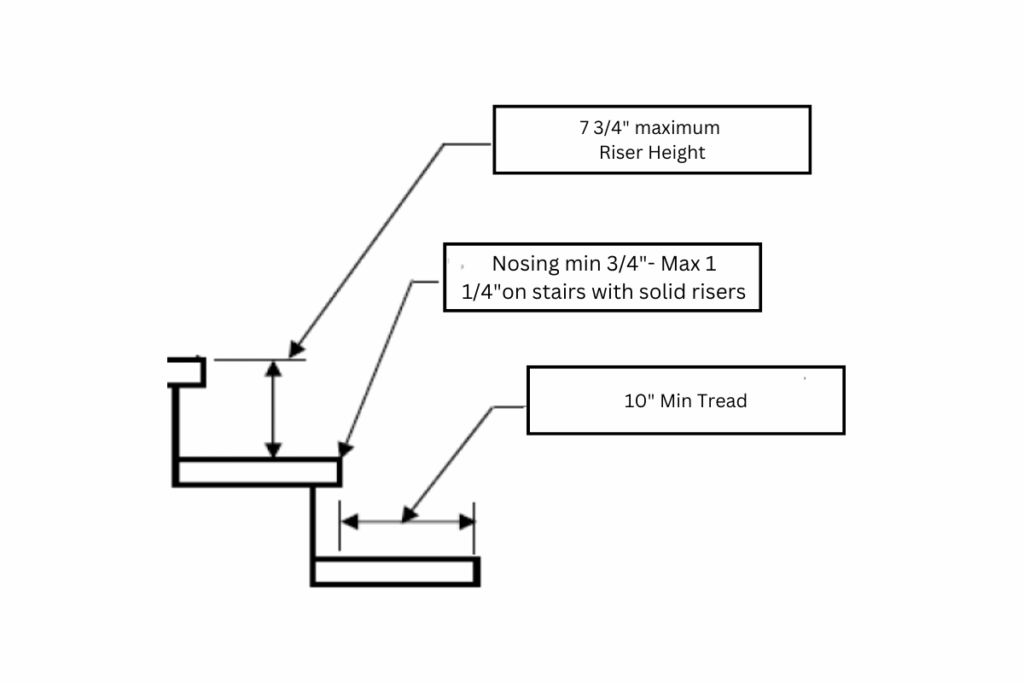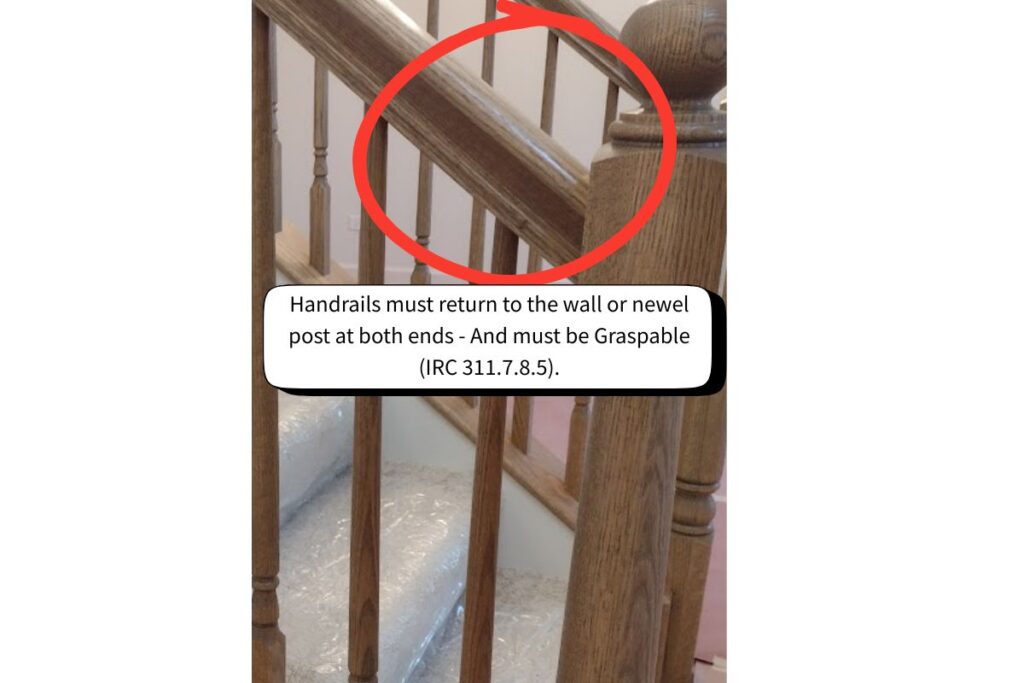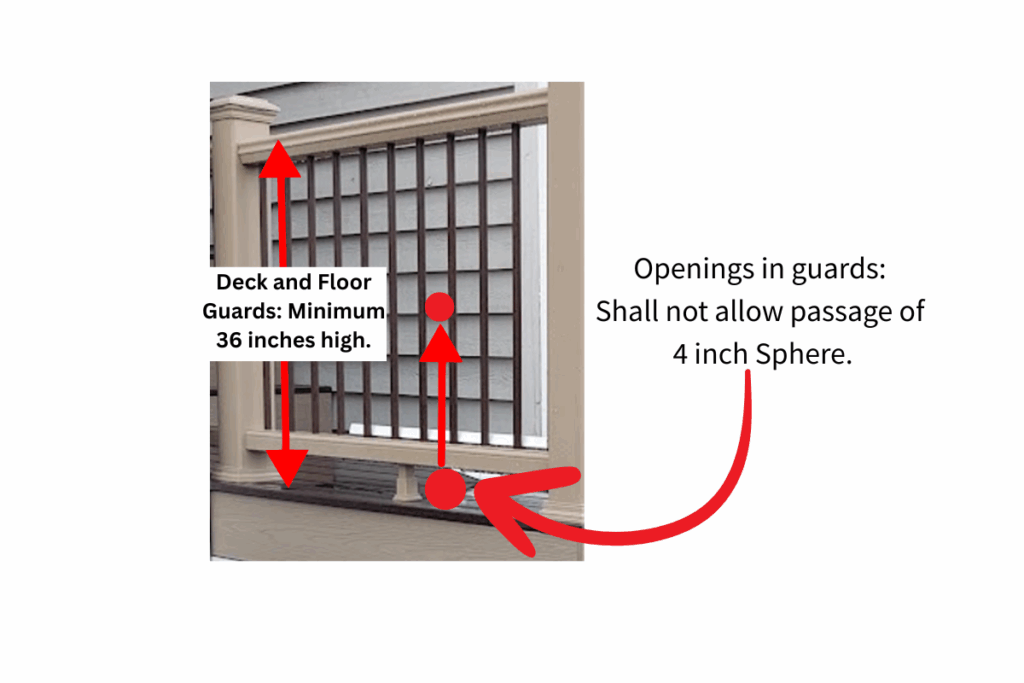
Understanding the International Residential Stair Code Guide can make passing your stairway inspection a whole lot easier. Whether you’re a contractor, a DIYer, or an inspector preparing for final sign-off, knowing the key IRC stair code requirements up front will save you headaches—and red tags.
This guide breaks it down clearly so you can build or inspect with confidence.
Essential Stairway Dimensions (IRC 311.7.1)

According to IRC Section 311.7.1, stairways must meet these minimum clearances:
- Overall Width (above handrails): 36 inches minimum.
- Below Handrail Clearance:
- With one handrail: 31½ inches minimum.
- With two handrails: 27 inches minimum.
- Headroom Clearance: Minimum 6 feet 8 inches vertically measured from the tread nosing to the ceiling.
Maximum Stair Riser and Tread Specifications (IRC 311.7.5)

Meeting riser and tread standards is key to a safe—and code-compliant—stairway:
- Maximum Riser Height: 7¾ inches (vertical measurement between treads).
- Maximum Riser Variation: ⅜ inch between tallest and shortest risers.
- Minimum Tread Depth: 10 inches, with a maximum variation of ⅜ inch in flight between widest and narrowest.
Landings and Handrails (IRC 311.7.6 & IRC 311.7.8)
- Landings (IRC 311.7.6):
- Required at both the top and bottom of stairways.
- Must be at least as wide as the stairway.
- Handrails (IRC 311.7.8):
- Height: 34–38 inches measured from the tread nosing.
- Clearance from wall: Minimum 1½ inches, maximum projection 4½ inches.
- Handrails must return to the wall or newel post at both ends.
- Must remain continuous throughout the stair flight.
Graspable Handrail Dimensions (IRC 311.7.8.5)

Choosing the right handrail profile is crucial:
- Type 1 (Circular): Diameter between 1¼ and 2 inches.
- Type 1 (Non-circular):
- Maximum perimeter: 6¼ inches.
- Minimum perimeter: 4 inches.
- Type 2 (Non-circular with finger recesses)
Guard Requirements (IRC 312)

Open-sided walking surfaces must have guards when they are more than 30 inches above grade:
- Deck and Floor Guards: Minimum 36 inches high.
- Stair Guards (serving as handrails): Between 34–38 inches high.
- Guard Opening Limitations:
- Openings in guards: Shall not allow passage of a sphere 4 inches or greater.
- Stair guard openings: Shall not allow passage of a sphere 4⅜ inches or greater.
- Triangular openings formed under stair treads and guards: No larger than 6 inches.
Common Mistakes That Cause Stair Inspection Failures
Even small mistakes can lead to big problems on inspection day. Some of the most common issues inspectors find include:
- Stair riser heights exceeding 7¾ inches or inconsistent riser variations.
- Tread depths less than 10 inches, or significant variation between treads.
- Handrails installed too low, too high, or not continuous across the stair flight.
- Missing or improperly sized landings at the top or bottom of the stairway.
- Guards with openings allowing passage of 4 inch sphere, or guards missing altogether for surfaces over 30 inches above grade.
Double-checking these common trouble spots against the IRC requirements can save you costly rework and inspection delays.
Inspection Checklist Summary
Quick checklist to help you pass inspection:
- Stairway width and headroom clearance
- Riser height consistency (no more than ⅜ inch variation)
- Tread depth consistency
- Proper landings at top and bottom
- Graspable handrail dimensions and placement
- Correct guard heights and opening sizes
Mastering these areas based on the International Residential Stair Code Guide puts you on track to pass your stair inspection without surprises.
Always check with your Authority Having Jurisdiction (AHJ), State codes, and local code amendments.
Watch the Video
For a clear step-by-step walk-through of stair code compliance, watch our full stairway inspection video below:
➤ Pass Your Stair Inspection: Common IRC Code Violations!
You’ll see real-world examples of stair dimensions, handrails, and guard installations done to code—making it even easier to get your next inspection passed the first time.
If you’re tackling other residential projects, check out our guide on How to Pass Your Pool Bonding Inspection for more tips on getting your inspection signed off the first time.